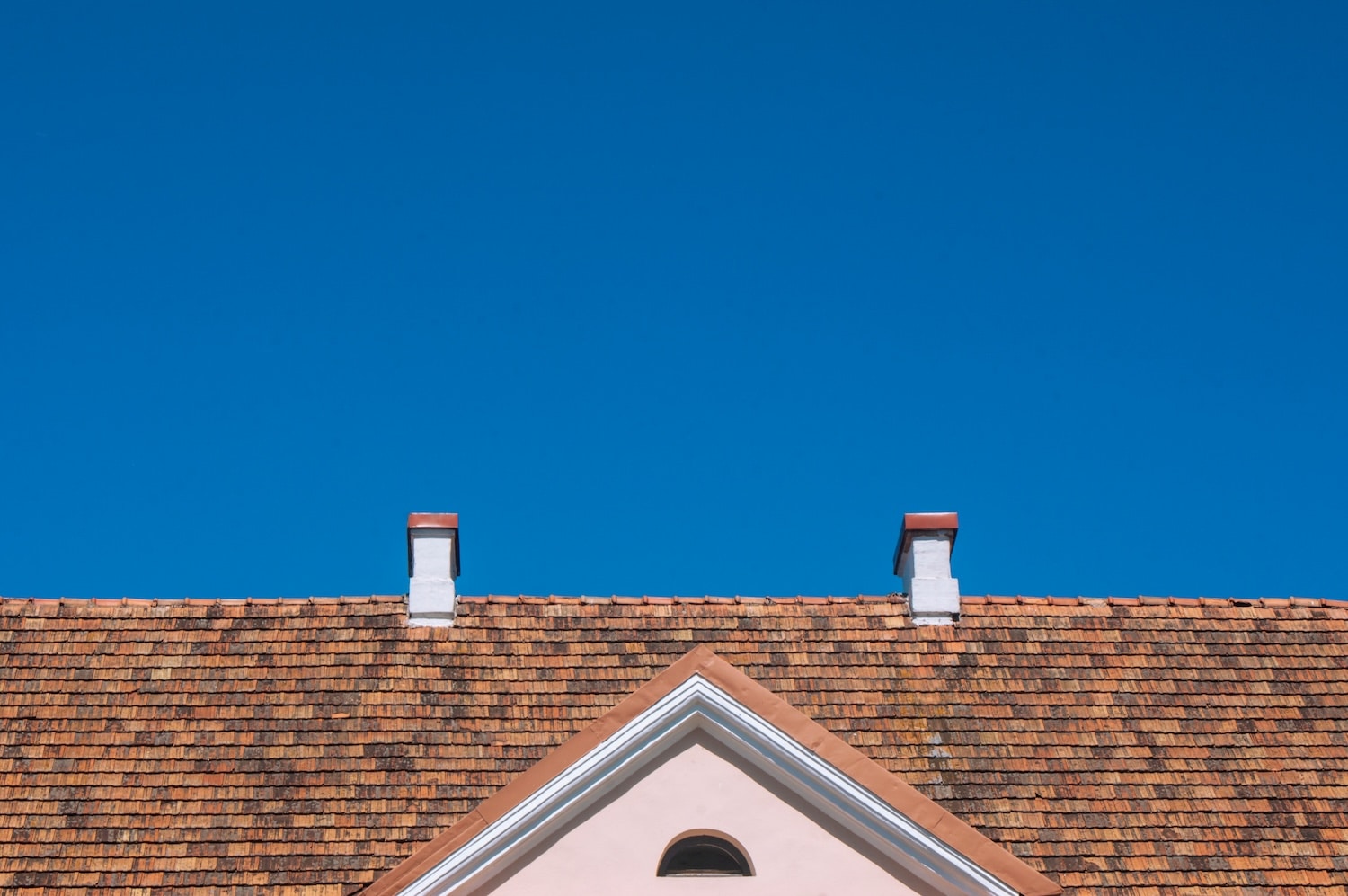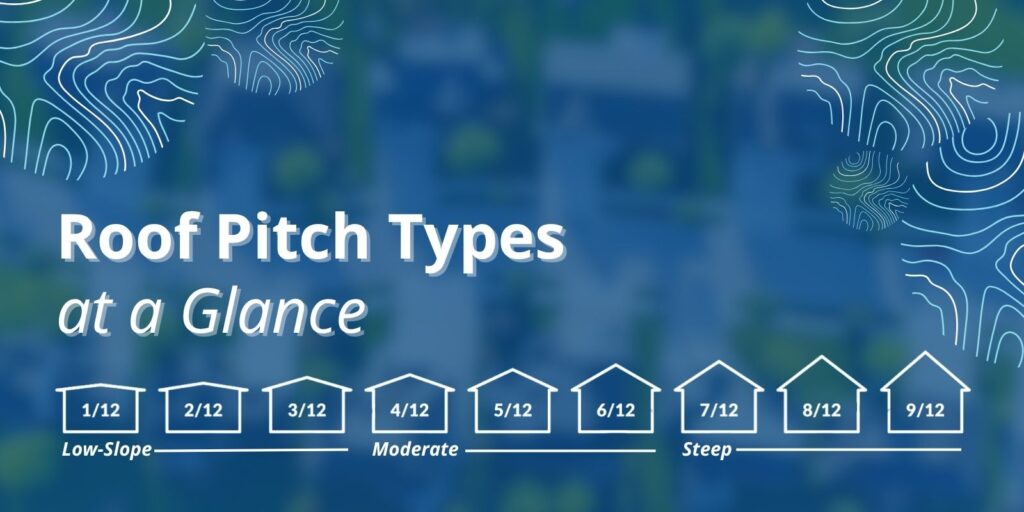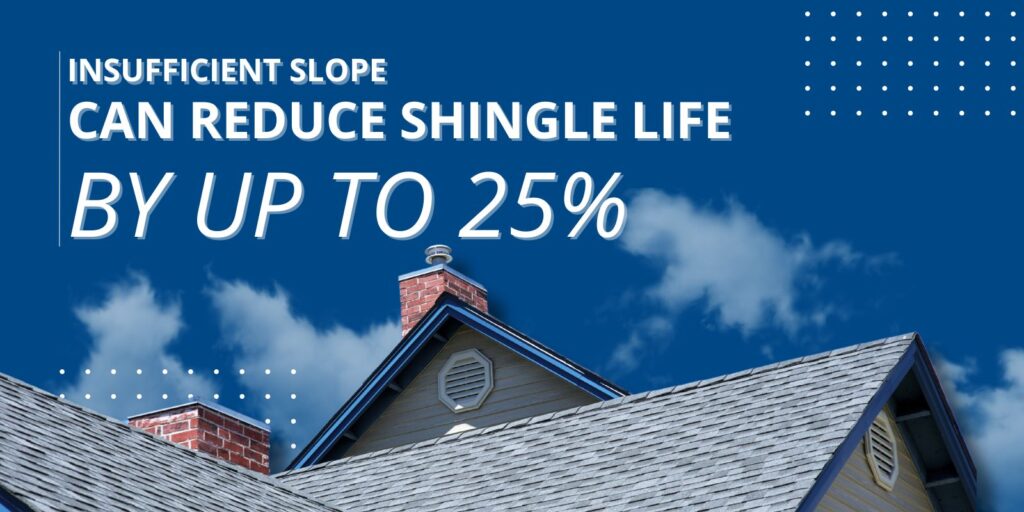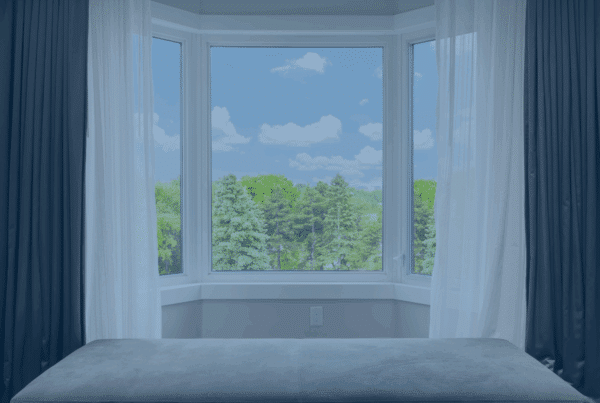
When it comes to maintaining your home, the roof is one of the most important parts to pay attention to. But did you know that your roof’s pitch is a major factor in how much care it needs?
Many homeowners are unaware of how roof pitch influences drainage, wear and tear, and long-term maintenance costs.
Whether buying a new home or looking to better care for your current one, understanding roof pitch will help you make smarter decisions.
What Is Roof Pitch?
Roof pitch describes the steepness or angle of your roof. It is typically shown as a ratio, such as 4:12 or 8:12.
The first number is the vertical rise in inches, while the second number is the horizontal run in inches.

For example:
- A 4:12 pitch rises 4 inches for every 12 inches of horizontal distance.
- An 8:12 pitch rises 8 inches for every 12 inches of horizontal distance.
The higher the first number, the steeper the roof.
Types of Roof Pitches
- Low-Slope or Flat Roof: 3:12 or lower
- Moderate Pitch: 4:12 to 6:12 (common on most homes)
- Steep Pitch: 7:12 or higher (often on older homes or those in snowy regions)
How Roof Pitch Is a Factor in Maintenance
Now let’s explore how roof pitch affects the upkeep your roof will require over time:
1. Drainage and Moisture Control
The steeper the roof, the faster rainwater and snowmelt can run off. On low-pitch roofs, water tends to drain slowly and can pool in areas, increasing the risk of leaks, mold, and rot.
Flat or low-slope roofs often require additional waterproofing membranes since this kind of pitch can reduce shingle life by up to 25% if they’re neglected.
Even in areas with mild rainfall, poor drainage caused by low pitch can lead to expensive repairs if not managed well.
2. Debris Accumulation
Steep roofs naturally shed leaves, branches, and other debris. A flatter roof may collect debris that clogs gutters and downspouts. Over time, this can create standing water and lead to deterioration of the roofing materials.
If your home is surrounded by trees, and your roof is low-pitched, you will likely need more frequent gutter cleaning and roof surface cleaning to prevent issues.
3. Snow Load Risks
In colder climates, roof pitch is critical in determining how much snow a roof will need to bear.
- Steep roofs allow snow to slide off more easily, reducing structural stress.
- Low-pitch roofs allow snow to accumulate, which can cause sagging or even collapse if not addressed.
If your roof has a shallow pitch and you live in an area with heavy snowfall, removing snow buildup becomes a key part of your seasonal maintenance plan.
4. Roofing Material Wear and Lifespan
Certain materials wear differently depending on the pitch:
- Asphalt shingles last longer on steeper roofs, where they stay drier and experience less pooling.
- On low-slope roofs, specialized membranes or coatings are often used instead of shingles to prevent leaks.
Because of this, roof pitch can be a factor in:
- How often your roof needs to be inspected
- The type of materials chosen
- How soon a replacement may be needed
5. Maintenance Accessibility
Steeper roofs are harder and more dangerous to access for inspections and repairs. This may increase labor costs when professional help is required. On the other hand, low-slope roofs may be safer for technicians to work on but require more frequent maintenance.
How Pitch Impacts Home Costs Over Time
Because of all these factors, roof pitch can influence several aspects of homeownership costs:
- Insurance: Some insurance companies take roof pitch into account when calculating premiums. Steeper roofs that shed water and debris more effectively may qualify for better rates.
- Maintenance Costs: Low-pitch roofs typically require more frequent cleaning, inspections, and repairs.
- Roof Replacement: Depending on your pitch, your roof materials may need replacement sooner or later than average.

Maintenance for All Roof Pitches
Regardless of roof pitch, certain maintenance steps are essential:
- Inspect gutters seasonally and after storms
- Look for signs of pooling or water damage on the roof or inside the attic
- Schedule professional roof inspections annually or biannually
- Trim overhanging branches to limit debris buildup
- Check flashings and seals around chimneys, vents, and skylights for wear
When to Call a Professional
You should consult a professional home inspector or roofing contractor:
- When buying a home (roof pitch can influence future maintenance costs)
- If your current roof is showing signs of leaks, sagging, or unusual wear
- Before replacing roofing materials (material choice depends on pitch)
- If your home’s roof pitch makes access difficult or unsafe for DIY inspections
A professional can identify pitch-related risks and give you a tailored maintenance plan to help avoid costly problems.
Conclusion
Roof pitch is absolutely a factor in home maintenance. It affects drainage, debris accumulation, snow load, material wear, accessibility, and long-term costs.
Knowing your roof pitch helps you plan for the right kind of care and understand what to expect as a homeowner.
If you are buying a home, or want an expert opinion on your current roof, Boggs Inspections is here to help.



